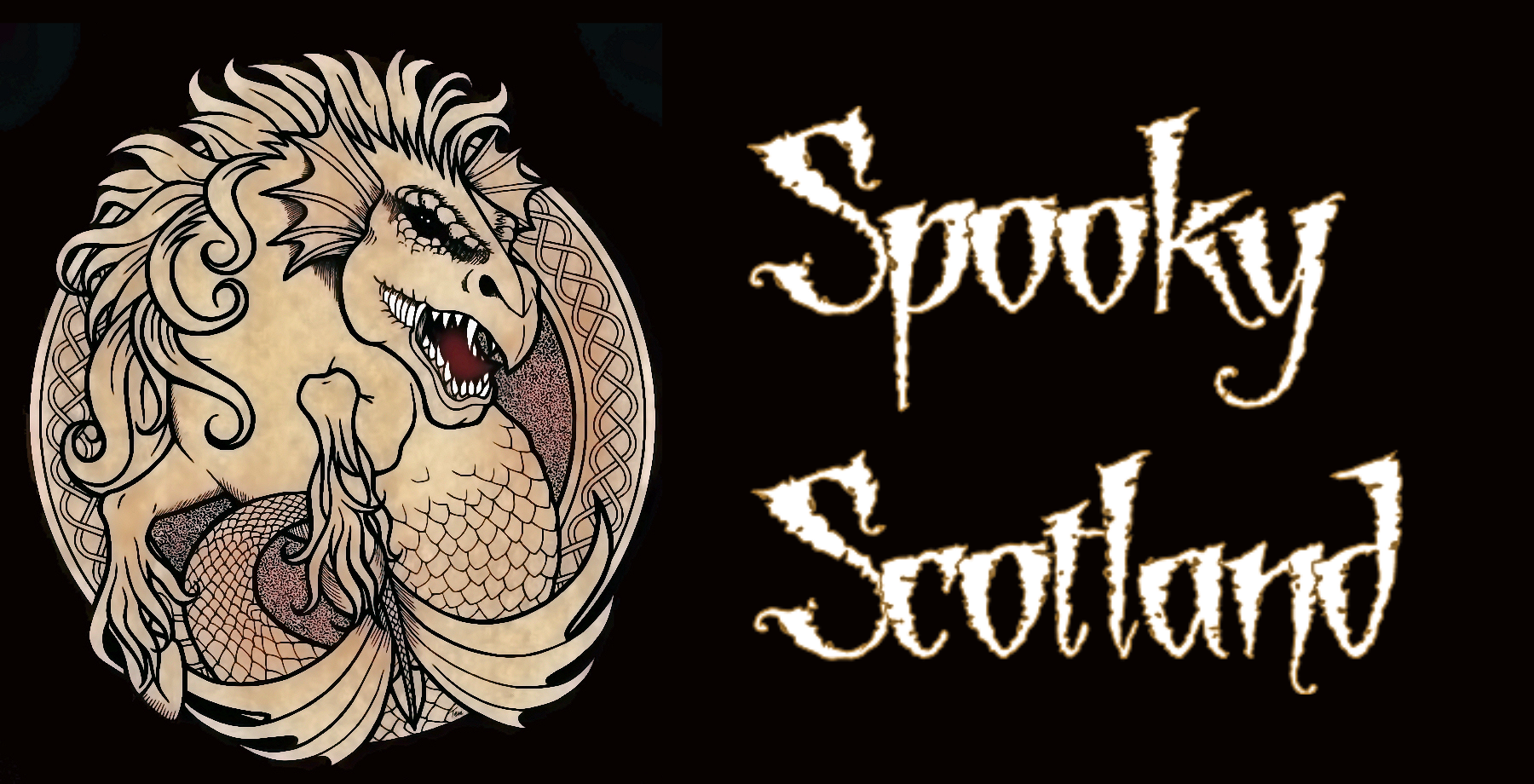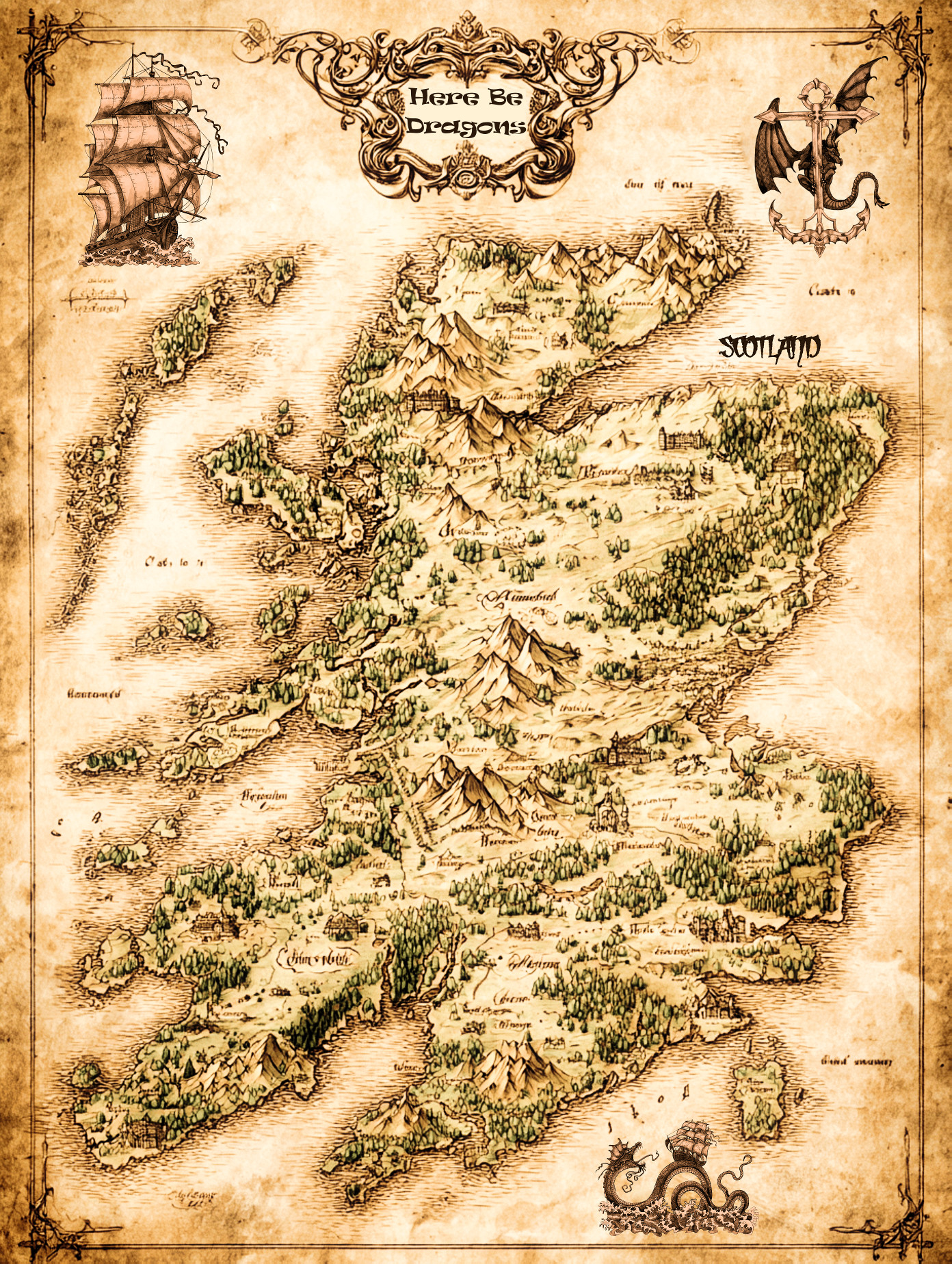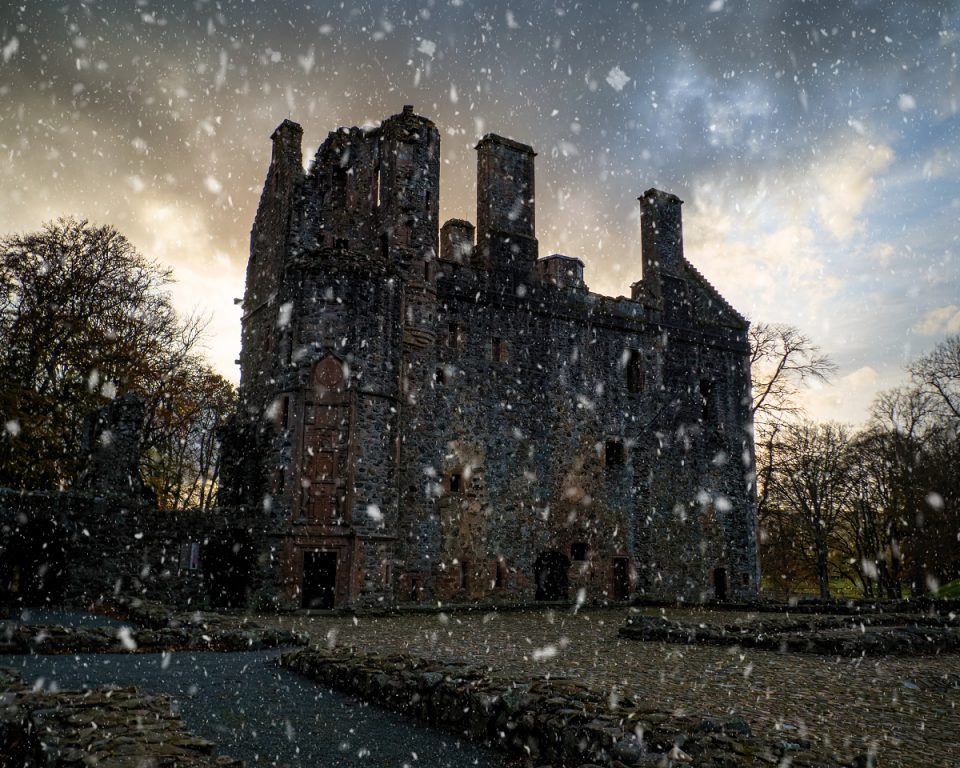When people think of dragons, wyrms aren’t the first thing that generally comes to mind. Rebecca Yarros certainly didn’t when she wrote her bestselling novel Fourth Wing. Her dragons are the classic winged, fire-breathing kind we’ve all come to adore. Interestingly, the dragons in her book all have names derived from Scots Gaelic. But here’s the twist: there are no winged, fire-breathing dragons in Scotland!
Instead, Scotland is home to wyrms and sea serpents, such as the Beither, the largest and most deadly serpent of them all. As an island nation, it makes sense that Scottish folklore is full of sea serpents. Wyrms are often used to explain the spirals left in the landscape by ancient henges or the ramparts of hillforts. These creatures are huge, legless, wingless serpents, but they’re still formidable: equipped with jaws full of razor-sharp teeth, poisonous or fiery breath, and a voracious appetite for human flesh.
Battling Dragons and the Wyrm of Wormy Hillock Henge
In the glen between Rhynie and the Cabrach, at the foot of Finglenny in the Clashindarroch Forest, lies a prehistoric site called Wormy Hillock. According to legend, this henge is said to be the burial site of a dragon. The story goes that the wyrm had been terrorising the locals until a brave warrior finally vanquished it. Nearby, there’s a place known as the Wormy Howe. This is an old road that once ran between Forres, Auchindoun, and the Cabrach. Myth has it that the wyrm arose in the lowlands of Moray and bit its way through the Balloch Hill, creating the passage known as the ‘Glacks of Balloch’ from Mortlach to Auchindoun.
It’s said the wyrm set out to confront a rival wyrm that had appeared at Bennachie. The two dragons battled it out. The Wormy Hillock wyrm must have met its end that day and was later buried by the locals.
Standing at the centre of the henge, you’ll see a ring of dark heather surrounding the hillock, it’s easy to imagine a scaled body curled up, mouldering into the earth. This is a very small henge from the late Neolithic period, only six metres across. At Balfarg Henge in Fife, pottery was found containing henbane, a plant known for its hallucinogenic properties. Perhaps the legend of the wyrm was born from a drug-induced trance of a prehistoric priest.
Michael Scott and the White Serpent
Depending on where you’re from, you might hear this story set in the wild Drumochter Pass or in the rolling hills of the Scottish Borders. Since Michael Scott is more closely linked with the Borders, it’s likely that’s where this adventure took place.
Before Michael Scott became the legendary Borders wizard who split the Eildon Hill into three, he was just a young man who loved wandering the old tracks through forests and over hills. One day, he was making the long journey to Edinburgh with two friends. As they reached the top of a hill, a loud hiss sounded behind them. Turning round, they saw a huge white serpent slithering up, clearly ready to attack. Michael’s friends didn’t hang about—they bolted in terror. But Michael stood his ground, staff in hand. As the serpent lunged, he struck down twice with his staff.
Continuing the Journey
His friends were relieved to see the dragon left in pieces on the hillside, and the group carried on towards Edinburgh. As night fell, they spotted a cottage and hoped for a warm place to rest. An old lady answered the door and, for a small fee, let them in. Soon enough, the travellers were sharing the story of their encounter.
“You’ve got some strange wildlife round here. I’ve never seen a pure white snake like that before,” Michael said.
The old lady looked shocked. “And what happened to this white snake?”
“I left it lying on the hill, split into three with my staff!” Michael replied, a bit proud of himself.
She shook her head. “That’s no ordinary beast. Folk thought it was finished once before, after it was sliced in two. But if the head crawls to the nearest stream, it will heal itself and come after you for revenge. You must fetch the middle part and bring it back to me. It’s the only way to stop it.”
Michael’s friends wanted nothing to do with it and went to bed, but Michael pulled on his cloak and set out alone into the cold night. He retraced his steps to the hill, only to find the serpent’s head had already vanished. He grabbed the middle section and hurried back to the cottage.
The old lady was waiting at the door. “You have it! You have it!” she cried, as Michael stumbled in, exhausted. She took the serpent’s body and dropped it into a pot over the fire.
Dragon Stew
“Why are you cooking it?” Michael asked, puzzled.
“It’s the only way to destroy it,” she explained. “And besides, I’m a poor widow. I can’t turn down a meal.”
Michael, still shivering from his midnight trek, settled by the fire. The old lady offered him a bed, but he said he’d rather warm up by the flames and keep an eye on the pot. As she went off to bed, she warned him, “Let me know when you think it’s cooked, but don’t touch the pot.”
Sitting by the fire, Michael’s stomach rumbled at the smell of the cooking meat. With the old lady snoring in the next room, he couldn’t resist dipping his finger into the pot to taste the juices. The moment the liquid touched his lips, he gasped and dropped the lid. Suddenly, he felt a surge of power like nothing he’d ever known. Knowledge of everything, past and future, seemed to fill his mind. His hunger vanished and his tiredness melted away.
The old lady rushed in and saw the look on his face. “You’ve tasted the serpent and gained its power,” she said.
“Do I not deserve it? Was it not me who killed the beast?” Michael replied.
She agreed it was his prize but reminded him he wouldn’t have his powers without her help. Michael Scott went on to become famous across Europe as a great wizard, but he never forgot the old lady who helped him that night. Thanks to Michael, she never wanted for anything again.
A Taste of Knowledge
If this story sounds familiar, you’re not wrong. It echoes the famous Irish legend of the Salmon of Knowledge, where the young Fionn mac Cumhaill accidentally tastes the juices of a magical salmon and is instantly filled with wisdom. In both tales, a humble meal becomes the key to great power and knowledge. Whether it’s a serpent simmering in a pot or a salmon roasting over a fire, these stories remind us that wisdom can come from the most unexpected places—and sometimes, all it takes is a taste.
More Dragons from the Borders: The Linton Worm
This is another tale from the Borders. The monster lived in a hollow on the north-east side of Linton Hill, a spot still known as the “Worm’s Den”, at Linton in Roxburghshire on the Scottish Borders. It would pop out from its lair at dusk and dawn to cause havoc across the countryside, munching on crops, livestock and even people. Nothing seemed to hurt it, and the whole area ended up ruined because of the beast’s greedy habits.
News of this reached the ears of John de Somerville, the Laird of Lariston. He was known for his bravery, which bordered on recklessness at times. He headed over to the nearby village of Jedburgh and heard all the wild stories from the locals. Watching the beast himself, he noticed something interesting: the creature would open its mouth wide to swallow anything in its path, but if something was too big to eat, it would just stay still with its mouth open. Spotting an opportunity, he went to a local blacksmith and got him to forge an iron-covered spear. This spear had a wheel at its tip, perfect for impaling a chunk of peat dipped in tar and brimstone. He even practised riding with the burning spear to get his horse used to the smoke.
Conquering the Dragon
De Somerville approached the worm’s hideout with his servant at dawn. He knew that sitting on his horse, he would be too large for the creature to swallow. Like something out of a jousting match, he attacked it, plunging his burning lance right into the monster’s gaping mouth and down its throat, giving it a fatal wound.
The Linton Worm’s thrashing death throes supposedly created the odd shape of the hills in the region, an area that later became known as “Wormington”. The animal slithered back to its lair to die, its flailing tail bringing down the mountain around it and burying it forever. The legend says that de Somerville’s bravery was remembered with a carved stone at Linton Kirk. He was made Royal Falconer, knighted and given the title “First Baron” of Linton. The Somerville family crest even featured a wyvern, a type of heraldic dragon, perched on a wheel.
The Stoorworm
The Linton Worm and the Stoor Worm came to similar ends, with burning peat delivering the fatal blow in both tales.
Mester Stoor Worm was the master of all Stoor Worms, so huge that it could wrap itself around the world. No one knew where it came from, but some said a malevolent spirit created it. Soon, it began a reign of terror, becoming one of the nine plagues to curse the world. The beast was so massive that it could crush castles with its forked tongue, sweep cities into its mouth, and its breath was poisonous to all life. Its head was as big as a mountain and its eyes as dark as lochs. Wherever its head rested, it demanded food from the locals. Eventually, it developed a taste for a rare treat: every seventh day at sunrise, it would yawn nine times and demand seven virgins. The people soon grew tired of losing their daughters.
Consulting a Wizard
Desperate, the people turned to an old wizard, who suggested feeding the king’s daughter to the Stoor Worm. The king was heartbroken, as she was his only child, and begged for another way. He was granted a ten-week reprieve and sent messengers across the land, promising his kingdom and the sword Sikkersnapper to anyone who could slay the beast. Many warriors tried, but most fled, and only twelve dared face the monster. None succeeded.
In the final week, all hope seemed lost until an unlikely hero appeared: Assipattle, the Cinder Lad, seventh son of a seventh son. He was a dreamer, often found by the hearth, covered in peat ash, making up stories. Hearing of the king’s plight, he slipped away in his little boat, taking a bucket with a smouldering peat. At sunrise, as the Stoor Worm yawned, Assipattle and his boat were sucked into its mouth. He was swept down its throat, found the liver, cut a hole, and stuffed it with the burning peat. The liver caught fire, and Assipattle raced back to his boat. The worm retched, spewing him out to safety.
Formation of the Northern Isles
Back on shore, Assipattle watched as the Stoor Worm burned. Black smoke poured from its nostrils, and in agony, its tongue grabbed the moon, slipped, and crashed to earth, creating the Baltic Sea. As the beast died, its teeth fell out, forming the Orkney Isles, then the Shetland and Faroe Isles. In its last moments, the Stoor Worm curled up and became Iceland.
Assipattle married the princess, and the people rejoiced, for the Stoor Worm was finally dead.
The Beither: Deadliest of Dragons
The stoorworm is a sea serpent, something it shares with the Beither. If you ever find yourself wandering the wild, misty hills of Scotland, you might hear tales of the Beithir, a giant, wingless serpent with a venomous sting, said to be the deadliest creature in Scottish folklore.
According to John Gregorson Campbell, the Beithir is the largest and most dangerous serpent of them all. He tells the story of the “big beast of Scanlastle in Islay,” which was so fearsome it devoured seven horses on its way to Loch-in-daal. The locals, desperate to stop it, set up a line of barrels filled with deadly spikes and baited them with meat, stretching from the shore to a ship anchored in the loch. Tempted by the flesh, the “loathly worm” slithered out onto the barrels and met its end thanks to the spikes and a well-aimed cannon. Not your average day in Islay.
The Beither and The Wicked Stepmother
The Beithir isn’t just a mindless monster, though. In another tale, John Francis Campbell shares the story of a wicked stepmother, married to an Irish king, who was eaten up with jealousy. With the help of a scheming henwife, she got her hands on a magical shirt. This shirt was a shape-shifting Beithir in disguise. The king’s son put it on and immediately fell under a dark enchantment. Luckily, a wise woman and her daughter came to the rescue. They brewed up a cauldron of herbs, stripped the prince down to just the magical shirt, and as he sank into the potion, the Beithir appeared around his neck. The wise woman’s daughter was quick with a knife and managed to cut the serpent free. In true fairy tale fashion, the prince and the girl ended up married.
Deadly Dragons
So, what exactly is a Beithir? Picture a massive, dragon-like serpent, but without wings. It’s said to live in caves and corries high in the mountains, and it’s always linked to water: rivers, lochs, and even the sea. Some say the Beithir is one of the fuath, a whole class of evil water spirits and monsters, and it might even be related to the infamous Stoor Worm or the Linton Worm.
There are plenty of superstitions about the Beithir. For example, if you kill a normal snake, you’re supposed to put a good distance between its head and body, or else the parts might rejoin and come back to life as a Beithir. If you’re unlucky enough to be stung by one, you need to race to the nearest river or loch. Should you get there before the Beithir, you’ll survive. If not, its venom will finish you off. Some legends say you can also be cured by dousing yourself in water.
The Beithir is even blamed for summer lightning storms. People used to say that if you spotted one of these serpents on a stormy night, it was the Beithir’s doing, and any damage from lightning was its fault.
If you’re ever exploring Scotland’s caves, corries, or lonely lochs, keep an eye out. The Beithir might just be lurking nearby, waiting for its next story to be told.
The Cailleach as a Dragon
Some say there’s a link between the wyrm or Beither and another legendary figure from Scottish folklore, the Cailleach Bheur. The Cailleach, often called the Queen of Winter, is a powerful and unpredictable goddess who rules over the cold, dark months. When winter gives way to summer, her opposite, Brìghde, takes over. There’s a wonderful old story that ties dragons and the hag together as one, set on the “mountain throne” of Ben Nevis.
The Cailleach was known for her jealousy and wild temper. Every year, she tried to hold back spring by smashing green shoots and knocking new buds off the trees with her hammer. One year, jealous of a beautiful maiden named Brìde, she captured her and locked her away deep inside Ben Nevis, forcing her to do endless, gruelling chores.
Shape-shifting Cailleach
Meanwhile, the Cailleach’s fairest son, Angus, woke from a dream about his soulmate and set off to find her. After days of searching, he arrived at Ben Nevis on the first of February and discovered that the girl from his dream was Brìde herself. Angus freed her from the Cailleach’s grasp. As Brìghde stepped out onto the frozen ground, the snow melted, and spring flowers bloomed wherever she walked. This magical moment is remembered as Là Fhèill Brìde, or Saint Brigid’s Day. It is also known as Imbolc, which marks the start of spring.
But the Queen of Winter wasn’t about to give up her power so easily. Furious at losing Brìde, she waged war against Angus, using her shape-shifting powers to cause chaos across the land. In one version of the tale, the Cailleach transformed into a snake, and Angus managed to split her in two. However, because the pieces weren’t properly separated or destroyed, they joined back together. The Cailleach returned to life as a Beithir. With this new power, she made one last stand, unleashing three days of blizzards, wild winds, and fierce storms. Even with the strength of a dragon, the Queen of Winter couldn’t stop the spread of new life. As spring took hold, her power faded. In the end, the Cailleach gave up, hurled her magic hammer beneath a holly tree, and fled west, falling into a deep sleep until the next winter.
Serpents and Dragons on Pictish Stones
The Picts were an ancient people who lived in what is now northern and eastern Scotland, famous for leaving behind mysterious carved stones known as symbol stones. These stones, dating from around the 4th to 10th centuries, are decorated with a range of symbols, animals, and intricate patterns that still puzzle historians today.
One of the most striking features on many Pictish stones is the serpent. At sites like Aberlemno and Brandsbutt, you can spot clear carvings of snakes, which some believe might represent adders, a snake native to Scotland. A serpent is carved onto Dunrobin 2, or the Princess Stone. The stone is associated with a cairn which covered the body of a woman in a stone-lined grave. The Golspie stone is especially interesting. It shows two serpents intertwined, but with fish tails instead of the usual snake tails. This makes them look more like sea serpents than snakes.
Some stones go even further with their monster imagery. The Dunfallandy stone, for example, shows two sea monsters that seem to be devouring a man. Meanwhile, the Conan Stone features two serpent heads that look very much like dragons. These carvings suggest that serpents, sea monsters, and dragons were important symbols for the Picts.
There are even stories attached to the dragon imagery. South of Glen Ogilvy at the other side of the Balluderon Hill, is a Pictish Stone known as Martin’s Stane. There is an oral tradition which explains the symbolism of the stone.
The story of the Martin Stane
Long ago, a man lived with his nine, reportedly beautiful daughters on farmland known as Pitempton. After a particularly arduous day tending the land, the farmer felt that his insatiable thirst could only be quenched by a pitcher of water fetched from a nearby spring. Having been so tired from his day of labouring, he entrusted his eldest daughter to the task. She eagerly obeyed her father, running to the well.
As time passed, and with no sign of his eldest daughter, the father sent the second-eldest daughter to find out what was delaying his daughter. Alas, when she did not come back either, he sent his third daughter. That pattern repeated itself until he sent the last sister. Imagine her horror when she discovered the dead bodies of her sisters lying amongst the bulrushes.
Martin, The Rescuer
Coiled around their battered bodies, basking in the blood of the innocent victims, was a huge serpent-like dragon. Before she could escape, she found herself in the grasp of the beast. Screaming out with her dying breath, a crowd of neighbours gathered. Amongst them was the poor girl’s sweetheart, a man named Martin. Martin, a blacksmith, was a man of “brave heart and tremendous skill and courage”.
Perhaps sensing that it was no match for the baying mob, the dragon attempted to make its escape, fleeing north-west to Baldragon Moss, where it was ‘draggelt’ (soaked). Then the avengers drove the dragon north to Strathmartine and surrounded it. Martin urged on by the cry of ‘Strike, Martin’, clubbed the mighty worm. The dying creature managed to crawl away to the spot where the stone now stands. It was again surrounded and finally slain by the young hero. Its dying words were:
I was tempit at Pittempton,
Draggelt at Badragon,
Stricken at Strike-Martin,
And killt at Martin’s Stone.
Scottish Dragons: A Breed Apart
From ancient carvings on Pictish stones to the wild tales of wyrms, sea serpents, and shape-shifting hags, it’s clear that Scotland’s dragons are a breed apart. While winged, fire-breathing dragons might rule the pages of modern fantasy, the creatures of Scottish legend are more mysterious and deeply rooted in the land itself. Wyrms, Beithirs, and sea monsters slither through our folklore, leaving their mark on hills, lochs, and even the stones our ancestors carved. Whether they’re battling heroes, shaping the seasons, or guarding ancient secrets, these serpents remind us that Scotland’s landscape and stories are full of magic, danger, and a touch of the unexpected. So next time you’re out exploring a misty glen or stumbling across an ancient stone, spare a thought for the dragons that have haunted these lands for centuries. Sometimes, all it takes is a closer look to find a legend waiting beneath your feet.




